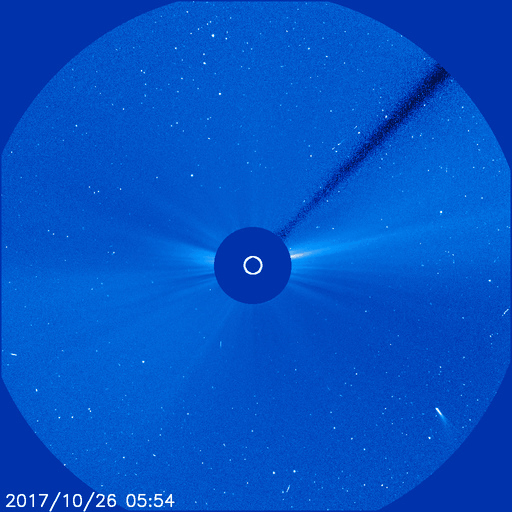It is considered that the summer season of “falling stars” is held in August. But this is not quite true: already from mid-July in our latitudes, you can observe a fairly active flow of δ-Aquariids, besides having two “branches” — northern and southern. The maximum of the last is expected on July 27, during which up to 20 meteors per hour sometimes appear. What is interesting about this “double shower”?
As it is easy to understand from the name, the radiant of the shower — an imaginary point on the celestial sphere from where meteors “fly away” — is located near the star δ Aquarii. Meteoric activity in this area of the sky at the end of July was first recorded in 1870, but it was only with the advent of photographic methods that researchers were able to detect two δ-Aquariids radiants at a distance of 15° from each other. The peak activity of the slightly weaker “northern” branch is 3-4 days behind the “southern” one.

It was only in 1986 that the Machholz comet (96P/Machholz) was discovered, with which it is customary to associate these showers. This is one of the most difficult short-period comets to observe. Every 5 years and 3 months it returns to the Sun, passing from it at a distance of 0.124 AU (18.5 million km), which is 8 times less than the average radius of the Earth’s orbit. Nevertheless, few astronomers can boast of having seen this “tailed star” with their own eyes. Basically, it is very weak and is beyond the reach of most visual instruments, and when it becomes bright, it turns out to be in the sky not far from our daylight, where it can only be noticed by coronagraph telescopes on spacecraft.

Now the trajectory of the Machholtz comet is oriented in such a way that it has no opportunity to approach the Earth, and it has remained so for at least 500 years. But once everything was different, as evidenced by the presence of meteor showers associated with the comet. In fact, it’s even more interesting: since there are two of these streams, it means that the comet’s orbit has changed at some point, and this happened precisely due to the gravitational influence of our planet. The “tailed star” came too close to it and made a kind of gravimaneur in its field of attraction, like those that purposefully produce automatic devices from time to time. Thus, the Northern and Southern δ-Aquariids are the “memory” of the comet’s celestial path before and after the fateful convergence. One can imagine what a grandiose “heavenly show” it was accompanied by, and it seems that this has already happened in the memory of mankind.
On June 16, 2028, 96P/Machholz will approach the Earth closest since its discovery (and in general in the XXI century): on this day we will be separated from it by 0.32 AU, or 47.8 million km. Even then, the conditions for its observations will not be particularly favorable, but it will still be easier to see it than usual. After such approaches, astronomers expect an increase in the activity of meteor showers associated with comets. But experts still do not dare to predict such events with great confidence. So we continue to monitor the δ-Aquariids — until they are “eclipsed” by the much more powerful and “hyped” August Perseids!
Follow us on Twitter to get the most interesting space news in time
https://twitter.com/ust_magazine
